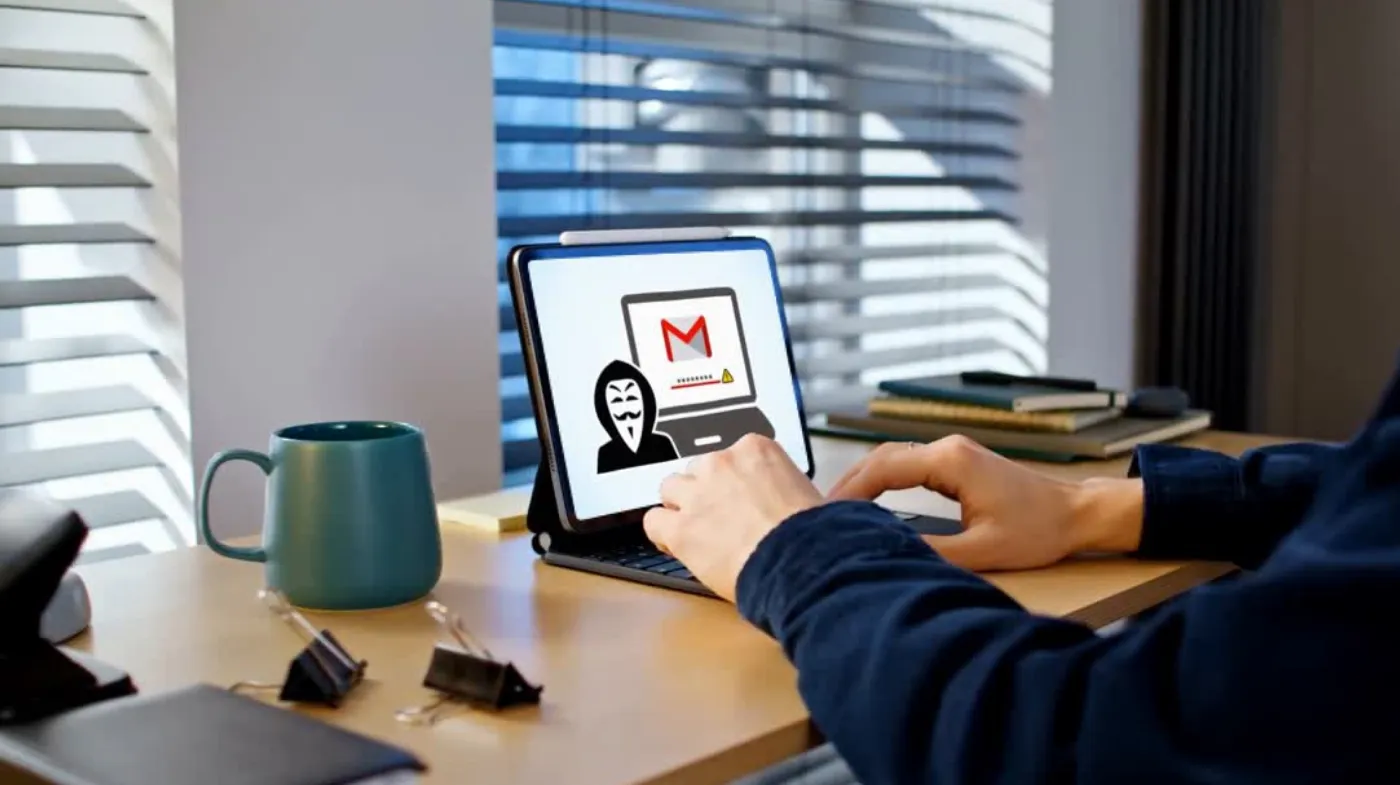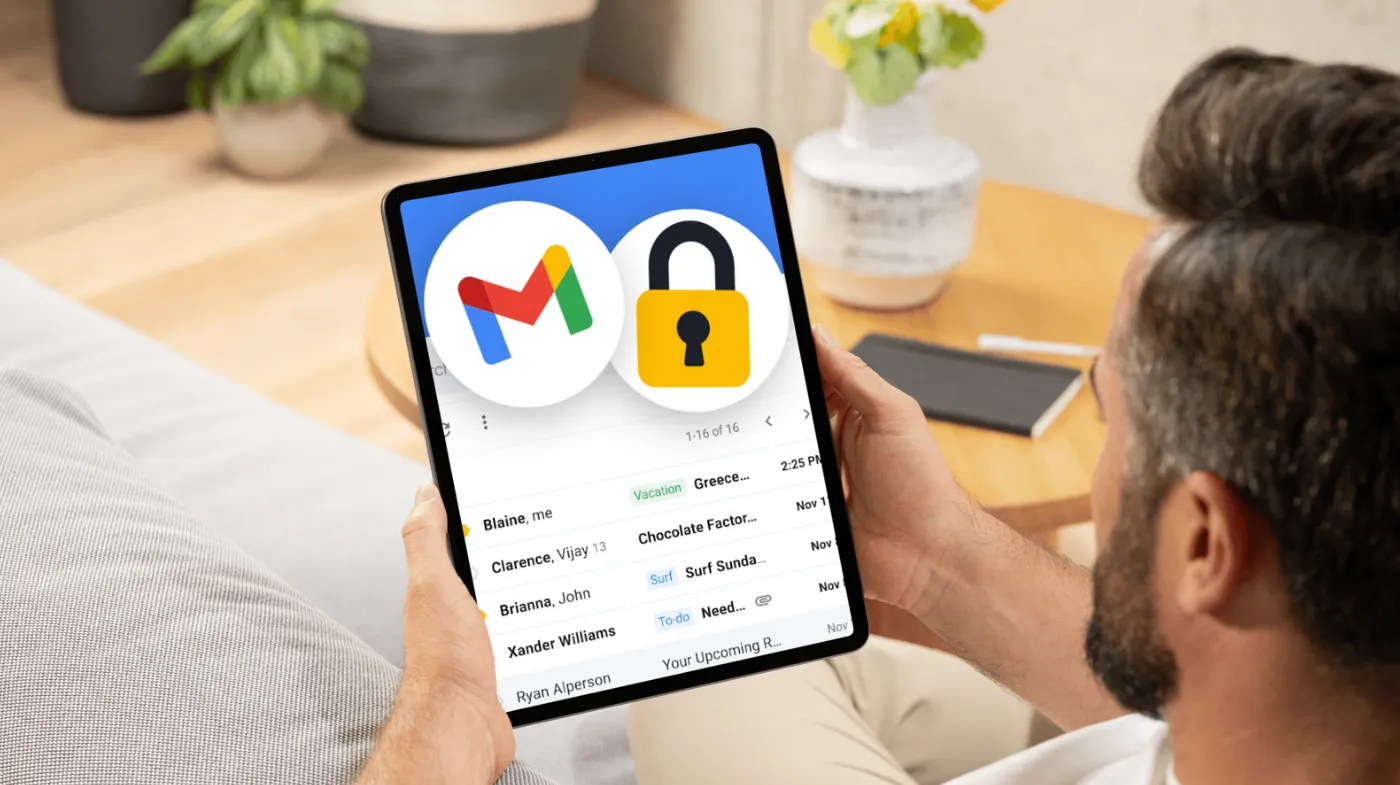
If your Gmail account has been hacked, acting fast is your best defense. A sudden loss of access, strange emails in your Sent folder, or reports from contacts about spam can all be signs that someone else is inside your account.
The first thing you need to do is visit g.co/recover and start the recovery process. This involves entering your Gmail address and following prompts that help Google confirm your identity.
After that, you’ll be asked a series of security questions, which could include old passwords or account creation details. Even if you don’t remember everything, give your best guess.
In this guide, we’ll walk you through all the steps to recover your Gmail account safely and strengthen its security, so it doesn’t happen again.
5 Steps to Recover a Hacked Gmail Account
To recover your hacked Gmail account, you’ll need to follow a series of precise steps.
Step 1: Start with the Google Account Recovery Page
Starting the recovery process for a hacked Gmail account begins with accessing the Google Account Recovery page, located at g.co/recover.
Enter your Gmail address and follow the prompts. To enhance the likelihood of successful recovery, use a device and browser you’ve previously utilized. This familiarity helps Google recognize you as the account owner.
Additionally, signing in from a known location, such as your home or workplace, further corroborates your identity.
These straightforward actions simplify Google’s verification process, ensuring you establish your rightful claim to the account swiftly and efficiently, setting the stage for the next steps in recovery.
Step 2: Answer Security Questions
How well do you remember the details of your account? Google will prompt you with a series of security questions, which may include previous passwords, your account creation date, or answers to custom security queries.
If you can’t recall exact answers, provide your best guess; incorrect responses won’t lock you out but will delay the recovery process.
Stay composed and focus on any relevant details that might help. Your objective is to demonstrate to Google that you’re the rightful owner of the account. Accuracy is essential, so take your time to reflect on each question carefully.
Step 3: Use Verification Methods
Once you’ve answered the security questions, you’ll need to verify your identity through one of the methods Google provides.
Depending on your setup, you might receive a code via SMS to your registered phone number, a verification email sent to your recovery address, or a prompt through the Google app on your smartphone.
Alternatively, you could use a code from an authenticator app you’ve linked. If these options aren’t accessible, click the “Try another way” button to explore alternatives.
Step 4: Provide a Contact Email
When recovering a hacked Gmail account, providing a contact email is vital, as it serves as a direct line for Google to communicate important updates and verification codes.
Use an email address you currently control and check regularly to guarantee you receive these critical messages. If you don’t have an alternative email, consider creating one quickly to avoid missing any notifications.
Step 5: Reset Your Password
After you’ve provided a contact email and confirmed your identity with Google, you’ll need to reset your password.
You’ll be prompted to create a new one, and it’s vital to make this password strong and unique. Aim for a combination of letters, numbers, and symbols to enhance security.
Utilizing an online strong password generator can simplify this process, ensuring complexity. Avoid any passwords you’ve previously used for this or other accounts; a fresh password is essential to protect your account from further breaches.
Once you’ve set a robust password, your account will be considerably more secure.
Tips to Strengthen Your Gmail Account Security

To enhance your Gmail account security, you should implement several strategic measures.
Enable 2-Step Verification
Many users overlook a critical security measure that can significantly improve their Gmail account protection: enabling 2-Step Verification.
This feature adds an extra layer of defense by requiring a second form of identification after entering your password. It drastically reduces the chances of unauthorized access, as hackers must bypass this added step.
You can choose from several verification methods, including text messages or an authenticator app. For added flexibility and compatibility with older apps or devices that don’t support 2-Step Verification, you can also generate an app password for Gmail.
This unique, one-time password allows you to securely connect your Gmail account to apps like Outlook or Apple Mail without compromising your main credentials.
Update Recovery Information
Since your recovery information is crucial for regaining access to your Gmail account, regularly updating your recovery phone number and email is necessary.
This proactive step facilitates quicker recovery in case of account compromise. Confirm that your recovery phone number is accurate and accessible, as it serves as a primary method for verification.
Similarly, keep your recovery email current; it provides an additional layer of security. Set reminders to review this information periodically, especially after any significant changes in your contact details.
Review Account Activity
While reviewing your account activity may seem tedious, it’s essential for strengthening your Gmail account security.
Start by checking the recent devices and login activity in your account settings. Look for any unfamiliar devices or locations; these may indicate unauthorized access.
If you spot anything suspicious, act immediately by changing your password and enabling two-factor authentication.
Regularly monitoring your account helps you catch potential security breaches early, ensuring your personal information remains protected.
Remember, proactive engagement with your account activity is a key strategy in safeguarding your Gmail and preventing further security issues.
Check Account Permissions
How well do you know the permissions granted to third-party apps accessing your Gmail account?
It’s vital to regularly review these permissions to maintain your security. Navigate to your Google Account settings and check the apps that have access to your Gmail.
Identify any that you don’t trust or recognize, as they could pose risks. Remove these apps promptly to prevent unauthorized access and data leakage.
Keep Software Updated
After reviewing third-party app permissions, it’s important to focus on keeping your software up to date.
Regularly updating your operating system, browser, and security software is essential for defending against vulnerabilities that hackers exploit. These updates often contain security patches that address known issues, enhancing your overall protection.
Confirm automatic updates are enabled for seamless integration of these vital changes. Additionally, regularly check for updates manually, especially for less frequently updated software.
Be Wary of Phishing Attempts
Phishing attempts are increasingly sophisticated, and you must stay vigilant to protect your Gmail account.
Utilize a reliable email hack detection tool that can identify suspicious emails attempting to steal your credentials. These tools analyze email patterns and alert you to potential phishing scams before you can engage with them.
Always scrutinize unsolicited messages for unusual sender addresses or unexpected requests for personal information. Additionally, avoid clicking links in emails that seem off.
How long does the Gmail account recovery process take?
Ever wondered how long the Gmail account recovery process takes? The duration varies based on your ability to verify your identity. For many users, it’s a swift experience, typically ranging from minutes to a few hours.
However, if you struggle to provide immediate verification, expect the process to extend to several days. Your patience is essential here, as following each recovery step carefully can greatly expedite the timeline.
Remember, the quicker you verify your identity, the sooner you’ll regain access to your account. Also, when resetting your password, avoid common password creation mistakes to keep your account secure moving forward.
How do filters and forwarding settings relate to Gmail account hacking?
While you might think your Gmail account is secure, filters and forwarding settings can be exploited by hackers to manipulate your email flow.
They often add filters to redirect incoming emails or delete important messages without your awareness. Automatic forwarding rules may send copies of your emails to an unauthorized third party, compromising your privacy.
To mitigate these risks, regularly review your filters and forwarding settings for unauthorized changes.
Take Control of Your Gmail Security and Protect Your Digital Life
Recovering a hacked Gmail account may feel overwhelming, but by taking the right steps promptly, you can regain control and secure your personal data.
Start with the recovery page, verify your identity, and reset your password using strong, unique credentials. Don’t stop there, implement 2-Step Verification, update your recovery info, and monitor your account regularly to prevent future attacks.
Staying proactive with your security settings is your best defense. Your Gmail holds more than just emails; protecting it means protecting your digital life.
